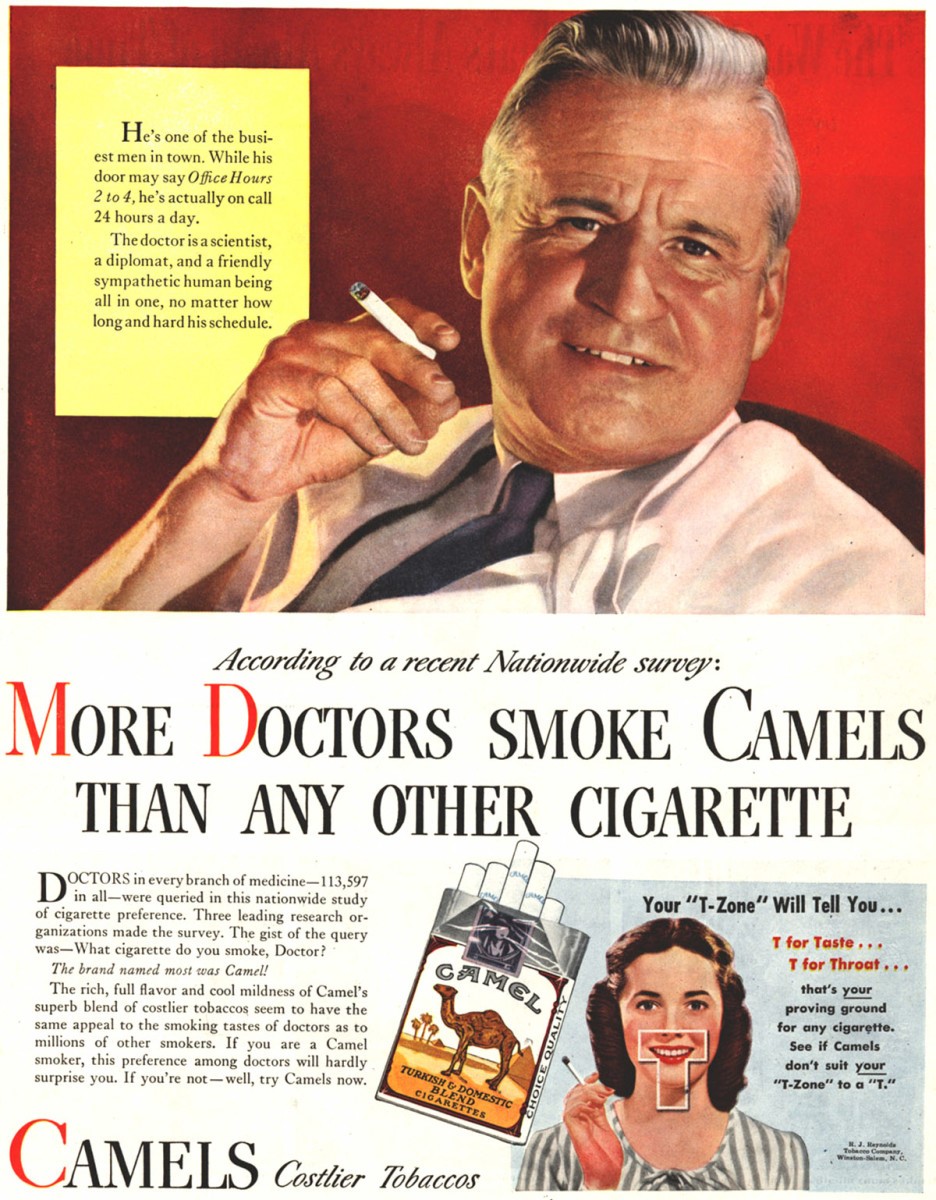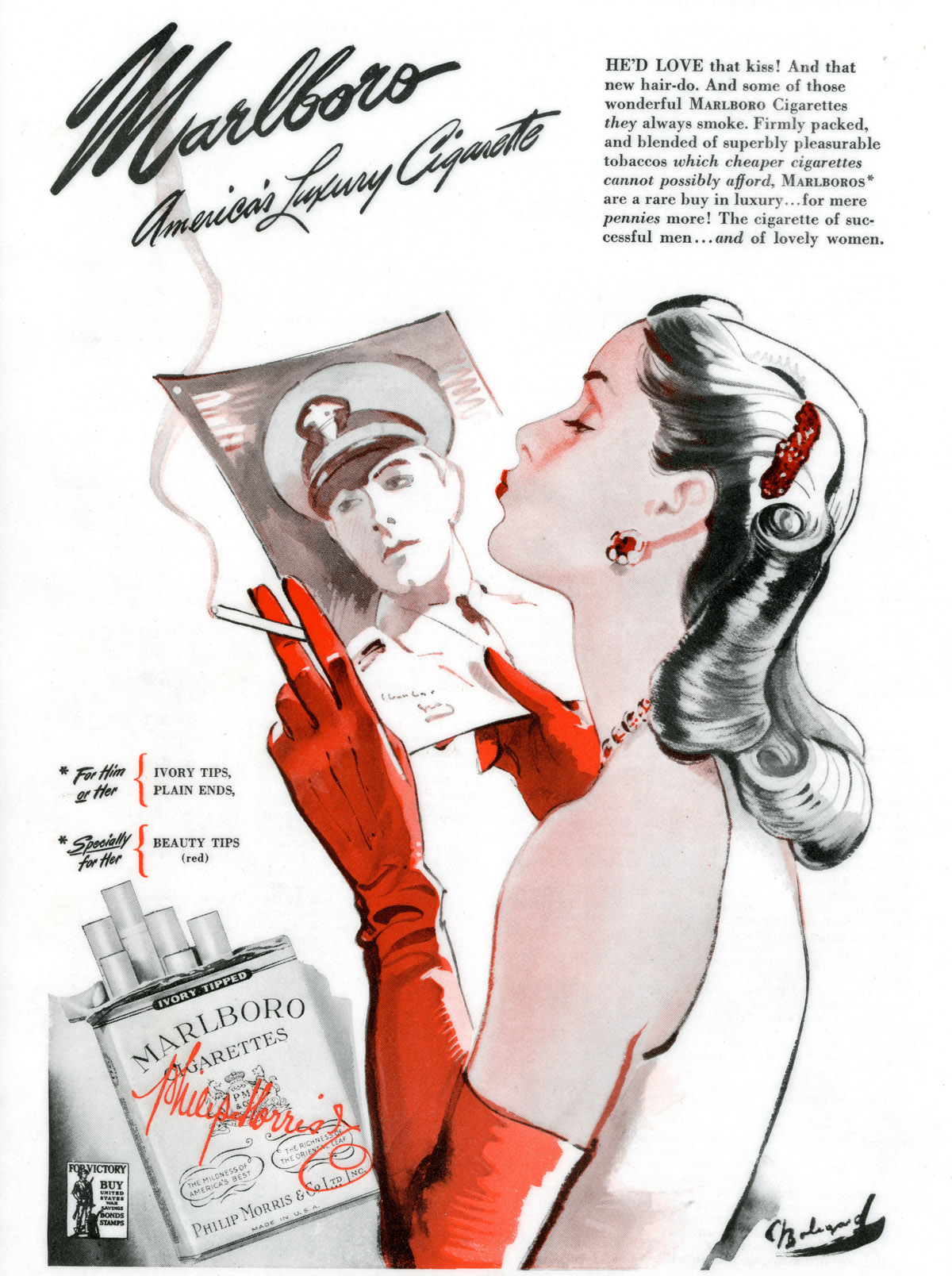Reading the old Sherlock Holmes stories, a scene jumps out: In The Hound of the Baskervilles, Dr. Watson returns to his apartment to find it so filled with smoke, he can barely see or breathe.
Through the acrid haze, he can see the outline of the famous detective, Holmes, sitting in his dressing gown with a black clay pipe clenched between his lips.
No children’s book would paint this scene today. But in 1902, it was common to read about characters lighting up cigarettes in a restaurant – it was a harmless vice, a gentleman’s amusement. Holmes smoking through a pound of strong tobacco, almost half a kilogram, was just what he did. Even kids recognized the iconic pictures of him smoking a pipe.
Today cigarette boxes come with a warning label that the product kills you. In many countries, advertising tobacco products has been outlawed, and if you still choose to buy these products, you need to pay a sin tax.
Insurers know that smoking is so hazardous to health that smokers pay double, or higher, the regular price for coverage. If I eyeball my actuarial tables, I can tell you that smoking adds another 10 years onto your age. Ignoring everything else, a 50-year-old who smokes is considered more likely to die than a 60-year-old who doesn’t [1]. Smoking can easily chop 5-8 years off your expected lifetime. Aside from damaging the lungs, it increases risk of heart attacks, strokes, stomach ulcers, cancer, infertility – pretty much everything [2]. It’s not an exaggeration to say that if you could do one thing to add years to your life, it would be not to smoke.
And yet back in Holmes’s day 100 years ago, concern about smoking would be considered alarmist. There was no definitive evidence that smoking was bad for you. And by the 1930s, tobacco companies had an army of doctors ready to debunk you as a quack for even suggesting something as benign as a cigarette could give you cancer. In fact, in the 1940s, you were more likely to see an ad like this, using doctors to promote smoking.
 An ad from the R. J. Reynolds Tobacco Company, published 1946
An ad from the R. J. Reynolds Tobacco Company, published 1946
There is a treasure trove of bogus old ads, viewable online, featuring claims by tobacco companies that cigarettes pose no health risks, or even that they’re beneficial in aiding digestion [3]. This was the tobacco industry’s response to the research surfacing in the 1940s linking smoking to cancer. Their answer was to fund “studies” of their own to “prove” that tobacco smoking was safe. Some companies paid doctors to claim their cigarettes were somehow “healthier” than the competition [4]. This history exposes how disingenuous marketing and fake research can mislead the public for decades. Yet, the truth came out eventually.
By the 1960s, the evidence against smoking was more than damning. In 1964, the U.S. Surgeon General released the first report on the health effects of smoking [5]. After reviewing more than 7,000 articles in the medical literature, the Surgeon General concluded that smoking caused lung cancer and bronchitis. By then, the debate over smoking’s deadly impact had been raging around the world for more than a generation, and medical experts around the world were reaching the same conclusion.
It’s interesting to see what impact these findings had on the general population. In the Netherlands, the International Mortality and Smoking Statistics (IMASS) database has data as far back as the 1950s. In the mid-20th century, close to 90% of men aged 20-60 were smokers. Think about that: Only one in 10 men didn’t smoke. Over the next 70 years that ratio completely reversed. In the Netherlands today, around 20-30% of men in that age category smoke.
Netherlands - Male Smoker Prevalence

Source: IMASS Database v4, Netherlands Prevalence of Smoking (All tobacco products)
Smoking has plummeted worldwide, and an entire generation’s health has improved as a result. Some (very rough) numbers for the Netherlands indicate that smoking reduction alone added around three years to the average lifespan over the last 30 years, and more years for the former smokers themselves[6]. Women, who never smoked as much to begin with, didn’t see the same impact.
While in the 1950s, it may have been “cool” to set a plant on fire and inhale it; today it’s not even tolerated in most public places. An episode of the television show Friends comes to mind, called The One with the Thumb airing in 1994, in which Chandler tries unsuccessfully to quit smoking. He’s berated by his friends when he fails and is sent to stand alone in the rain outside [7]. A “disgusting habit,” his friends call it. Quite far from its earlier associations with success and beauty. Today it is associated with disease and death.
 An ad for Marlboro, 1944. Smoking was once associated with luxury, beauty, and status. Today, not so much.
An ad for Marlboro, 1944. Smoking was once associated with luxury, beauty, and status. Today, not so much.
As much smoking has declined over the last 70 years, there remains that 20% of people (or 30% for men in South Africa [8]) who still smoke despite advertising bans, warning labels, sin taxes, and widespread knowledge of harm. Perhaps it says something about human nature that you can drive past an oncology ward, where lung cancer patients are treated, and see doctors themselves lighting one up.
We might actually have another problem with smoking alternatives. Vaping, e-cigarettes, and devices such as the IQOS are all promoted as “healthier” alternatives, in fact by many of the same companies that told us cigarettes were harmless in the first place. Many young people are vaping and becoming guinea pigs for a new experiment. The 50-year debate may be about to begin all over again, perhaps with disastrous consequences for those who believed these products were as “safe” as advertised.
As a closing note, the history of smoking carries many lessons. What will be our next big health discovery? Is it going to be the danger of sugar? Or the risk of sedentary lifestyles? Or something we’re missing entirely? Sherlock Holmes, for all his genius, was unable to deduce that smoking was harmful. Actuaries and scientists take decades to identify mortality trends, largely because the evidence appears after life ends. It took more than 100 years of research, discussion, and debate to reach our current knowledge of the risk. Perhaps that’s good news for the next generation, who, having access to knowledge we lack, will hopefully live longer – and healthier – lives.






